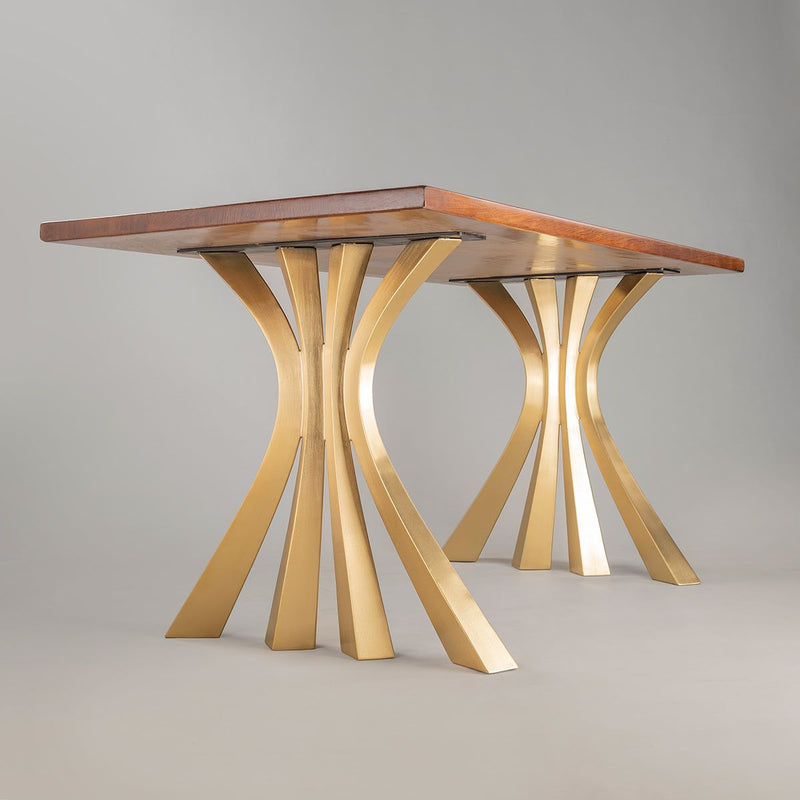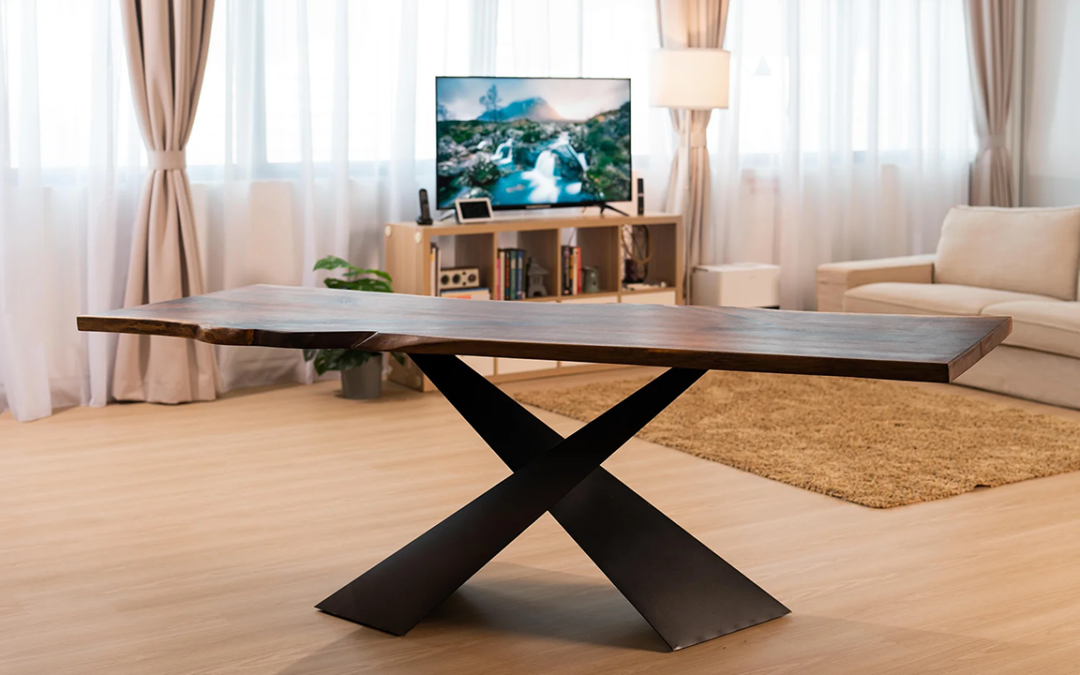Leading Patterns in Dining Room Table Legs to Elevate Your Dining Space
Leading Patterns in Dining Room Table Legs to Elevate Your Dining Space
Blog Article
A Detailed Consider Dining Table Leg Styles: Finding the Suitable Suit
Selecting the ideal dining table leg design is essential for both aesthetic appeal and sensible capability. Conventional 4 legs supply ageless sophistication and stability, while the pedestal base gives enhanced legroom and a modern look. For those with larger tables, trestle legs guarantee strong support, whereas hairpin legs introduce a mid-century modern ambiance with their minimalist style. The x-shaped legs blend contemporary design with enhanced security. Each of these options brings special benefits, making the choice greater than just a matter of preference. Discover better to uncover which style perfectly matches your dining space and lifestyle.
Traditional Four Legs
Among the different kinds of eating table leg designs, the standard four-leg layout remains an ageless choice for lots of houses. 4 legs give well balanced support, making sure the table remains stable and capable of bearing significant weight (dining room table legs).
From an aesthetic perspective, the conventional four-leg style can be conveniently adjusted to different indoor designs. Whether crafted from timber, metal, or a mix of products, these legs can be intricately carved, streamlined and minimalistic, or anything in between. Their flexibility allows them to enhance both rustic and contemporary settings effortlessly.
Furthermore, the simple structure of the four-leg design facilitates simplicity of motion and placement within an area. Unlike more facility bases, this design lessens blockages, supplying ample legroom for diners. In recap, the conventional four-leg table leg style marries enduring elegance with practical capability, making it an astute choice for those looking for both form and feature in their dining furniture.
Pedestal Base
Commonly commemorated for its elegant and space-efficient design, the pedestal base is a notable alternative to the traditional four-leg arrangement in dining table leg styles. This distinct base generally features a solitary main column sustaining the table top, which can differ in form, from ornately carved wood to streamlined, modern-day steel. Among the main benefits of the stand base is its ability to make the most of legroom and seating flexibility. Without corner legs, restaurants are managed higher freedom of movement, making it an excellent choice for round and oblong tables that advertise even more intimate and comprehensive celebrations.
Additionally, the pedestal base's central assistance can manage considerable weight, enabling making use of much heavier tabletops, such as marble or thick wood. This strength coupled with its visual convenience makes the stand base a popular selection in both conventional and modern interior setups. It can perfectly incorporate with various design themes, from timeless beauty to minimal modernity. The main column itself uses a canvas for elaborate styles and imaginative expressions, adding a component of aesthetic rate of interest underneath the table. In summary, the pedestal base combines functionality with style, making it a fine-tuned and practical alternative for diverse eating environments.
Trestle Legs
Trestle legs give a durable and ageless foundation for eating tables, characterized by their horizontal cross-bracing and strong support beams. Originating from middle ages times, this design has actually developed yet retained its crucial structure, making it a perennial fave in both traditional and contemporary settings. The central trestle beam of light, often sustained by 2 or even more vertical articles, provides remarkable security, enabling for bigger table sizes without the requirement for extra legs.
A significant benefit of trestle leg tables is the adequate legroom they offer. Unlike tables with 4 edge legs, the absence of blockages at the table's sides offers unimpeded room for chairs and restaurants, boosting comfort and ease of access. This makes trestle tables perfect for accommodating larger gatherings, whether in a dining-room or a reception hall.
The aesthetic convenience of trestle legs is noteworthy. Offered in a variety of materials such as wood, metal, and composite, they can be ended up to enhance a variety of interior styles. From rustic farmhouse to sleek her comment is here contemporary styles, trestle legs can be personalized to match specific tastes. Their enduring charm and functional advantages make trestle legs an engaging selection for those seeking both design and practicality in their table.
Barrette Legs

The allure of hairpin legs depends on their simplicity and versatility - dining room table legs. Readily available in a series of materials, consisting of steel and brass, they can be completed in numerous colors to enhance different indoor designs. Whether coupled with a rustic wooden tabletop or a modern glass surface area, barrette legs easily mix performance with a touch of classic beauty
Sturdiness is an additional significant attribute of hairpin legs. In spite of their delicate appearance, these legs are crafted to birth considerable weight, guaranteeing the dining table continues to be secure and protected. In addition, they are reasonably easy to set up, making them a prominent selection for do it yourself fanatics and professional furniture manufacturers alike.
X-Shaped Legs

Built from materials such as steel, timber, or a mix of both, X-shaped legs can be customized to match numerous layout preferences. Steel legs usually provide a streamlined and commercial feel, suitable for loft-style apartment or condos and modern eating areas. On the various other hand, wood X-shaped legs use a warmer, a lot more rustic appeal, ideal for farmhouse or diverse insides. The flexibility in materials permits home owners to customize their eating tables to much better go to this website fit their overall style plan.
In addition, the design behind X-shaped legs guarantees even weight distribution, minimizing the danger of tottering and enhancing resilience. This makes them particularly well-suited for bigger table that call for added assistance. Fundamentally, X-shaped check out here legs blend functional engineering with contemporary looks, making them an ageless selection for varied dining settings.
Verdict
A comprehensive understanding of eating table leg styles reveals the distinct attributes and benefits of each layout. Typical four legs provide stability and ageless charm, while stand bases offer legroom and a structured appearance. Trestle legs make certain robust support for larger tables, and barrette legs present a mid-century modern-day aesthetic. X-shaped legs integrate modern layout with boosted stability. Picking the appropriate leg design makes certain both practical and visual complete satisfaction in any kind of dining area.
Report this page